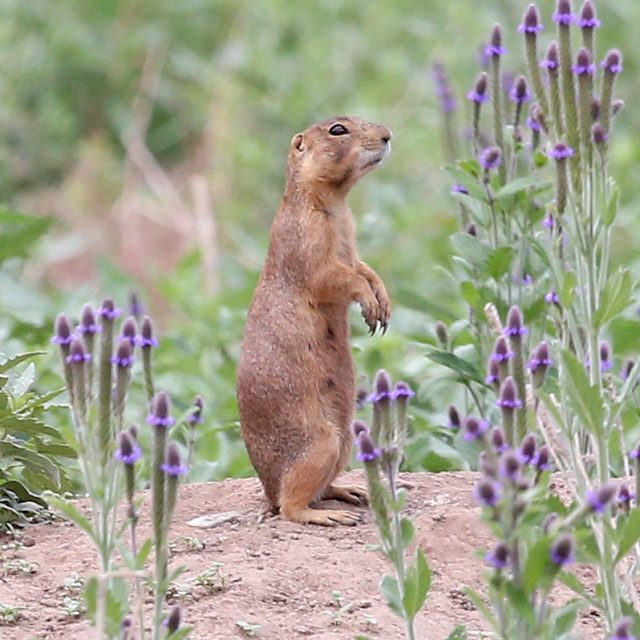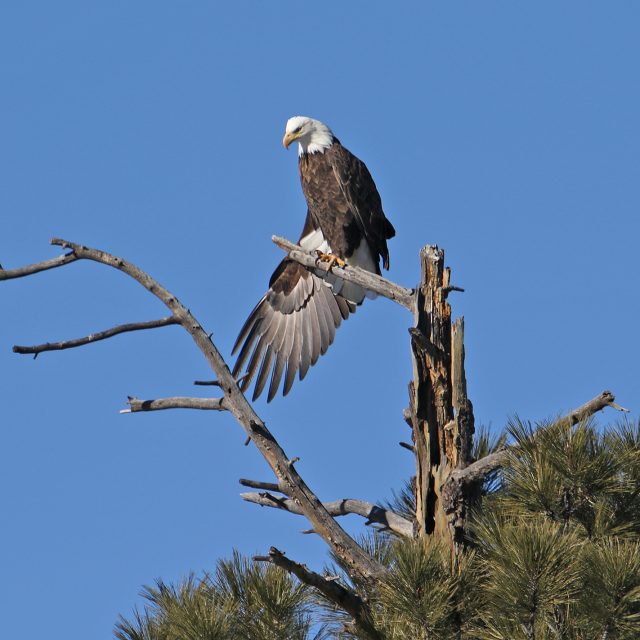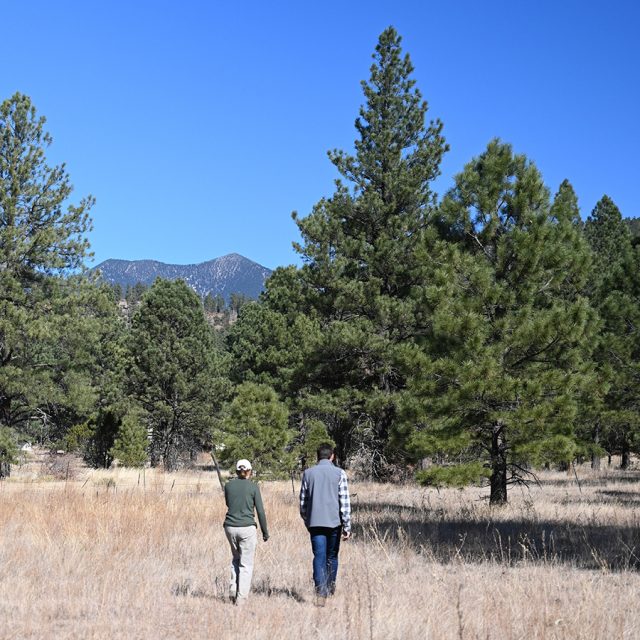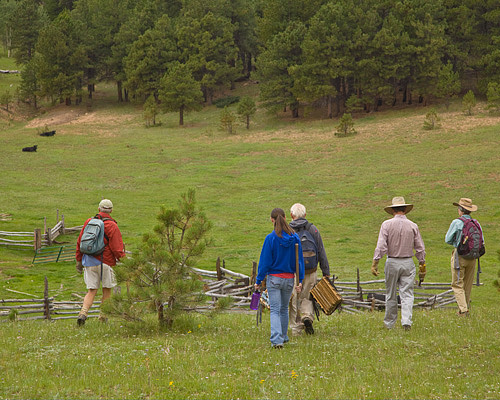
As we near completion of the Colton Meadows Conservation Project, the Museum of Northern Arizona and the community will have preserved nearly 90 acres of prime wildlife habitat and recreational land.
The effort to conserve Colton Meadows began in 2018, when the MNA’s Board of Trustees embarked upon a creative approach to converting land bought as an investment in 1977 into funds to add to MNA’s endowment for long term sustainability. Instead of selling the 90 acres for development, the board segmented it into five 18-acre sections, and presented the community with the option of, in exchange for a $600,000 donation, permanently preserving each section.
Three of these parcels were conserved through donations, with the remaining two parcels (36 acres) sold with strict restrictions that aligned with the museum’s conservation goals. The purchaser agreed to the museum recording a conservation easement over the property that allows for only three homes on the 36 acres. Each home must be located within a 1.33-acre building envelope, with the balance of property preserved. In other words, 31 of those 36 acres are now preserved by a recorded conservation easement.
With the final donation pledge fulfilled in late 2024, the remaining three parcels will now be placed under a permanent conservation easement held by Coconino County. The legal document prevents all building or development on the property, preserving the acreage as open space for wildlife, recreation, and non-invasive research. The only permitted uses are non-invasive research and trails, including specifically allowing for future trail improvements and easements for the Flagstaff Urban Trail System (FUTS).

Habitat
From the parcel’s ground cover up through its tallest trees, this tract contains an extensive diversity of habitats that support ~280 species of vascular plants, ~124 birds, 41 mammals, reptiles and amphibians, and several thousand species of arthropods (insects, spiders and other invertebrates). Meadowlands comprise much of the parcel while ponderosa pine forest and oak woodland habitats dominate the ridges. The treed areas include large old-growth yellow pines and snags, rocky mountain juniper, old-growth oak, and rejuvenated oak from a 1950s fire. Portions of the meadow area are covered by an ecologically-healthy biological soil crust that is becoming rare in our region. This soil crust supports native grasses and forbs, mycorrhizal fungi and ecologically helpful micro-organisms. See (Map 5) Habitat.

Wildlife
Elk, deer, mountain lion, and other animals utilize all parts of the 90 acres. These animals migrate through the 90 acres to reach the region’s Rio de Flag wildlife corridor and the A-1 Mountain corridor, through which they move down to pinyon-juniper country in late fall and back up again in spring. Migrating elk, in herd sizes as large as over 100, are often observed bedding down in the meadows. Osprey nest and fledge young in the Switzer drainage along the tract’s eastern boundary; owls and hawks prey here, and bald eagles are roosting here. Conservation of meadow habitats is also critical for native pollinators, many of which are in danger of extinction. See (Map 1) Wildlife.

Recreational Features
A long-existing “social trail,” used today by recreational horseback riders, hikers and bicyclists, runs along the Switzer drainage. Recreational opportunities throughout the 90-acre tract include bird-watching, nature walks, and amateur astronomy. The conservation easements specifically allow for the possibility of upgrading and connecting these trails to the Flagstaff Urban Trail System. See(Map 2) Trails.

Watershed
Shultz Creek, a major tributary of the Rio de Flag, runs along the western edge of the 90-acre tract. The creek’s flood-plain extends well into the parcel, where alluvial soil meadows function as a natural “sponge” to absorb stream runoff and—during the heaviest rains, erosional events, or rapid snowmelt—floodwaters. This helps protect downstream properties from the flooding and sediment transfer that could occur during 50- or 100-year floods. Switzer Canyon, a secondary tributary to the Rio, runs through the parcel’s eastern portion. See (Map 4) Watershed.

Research
The museum will still be able to use the meadows for non-invasive research. This may include biology, botany, and long-term climate studies. Portions of the meadows provide an opportunity to do long-term research on how meadowlands recover from agriculture. Those studies were begun in 1957 by MNA researcher W.B. McDougall, about a decade after Mary-Russell Ferrell Colton set the fields fallow.
